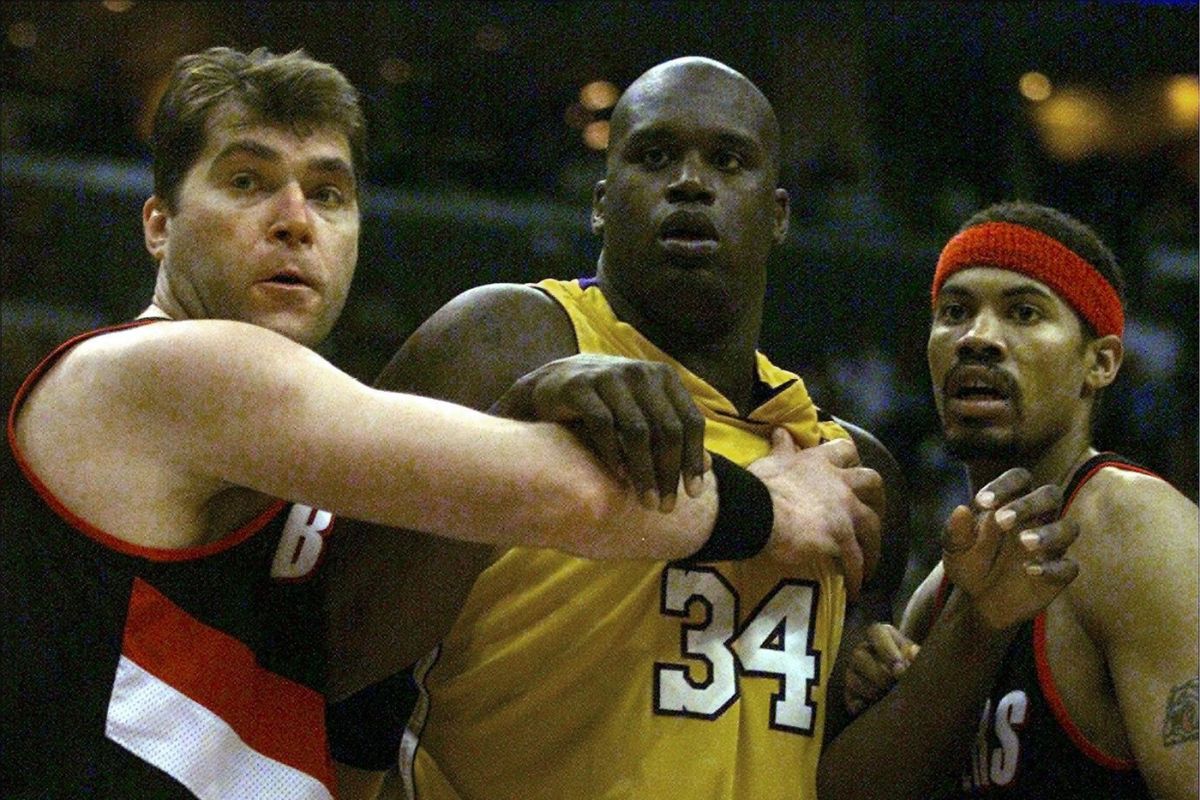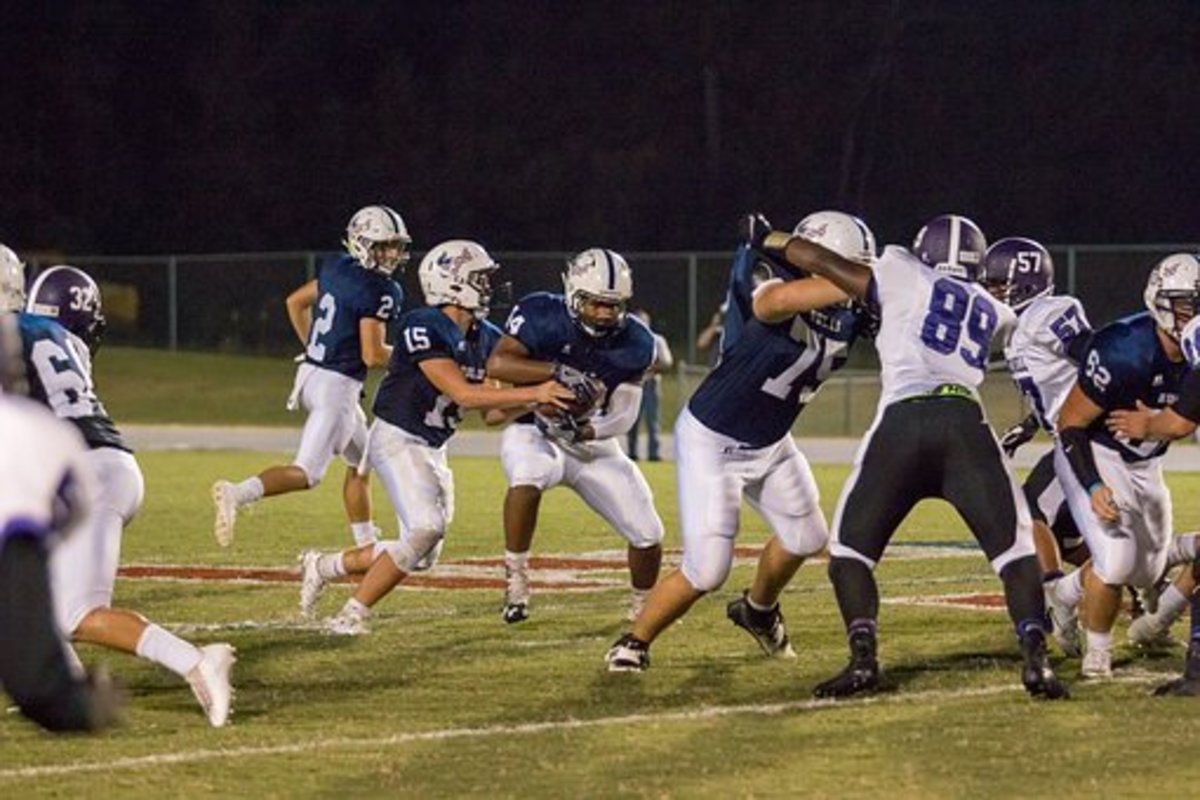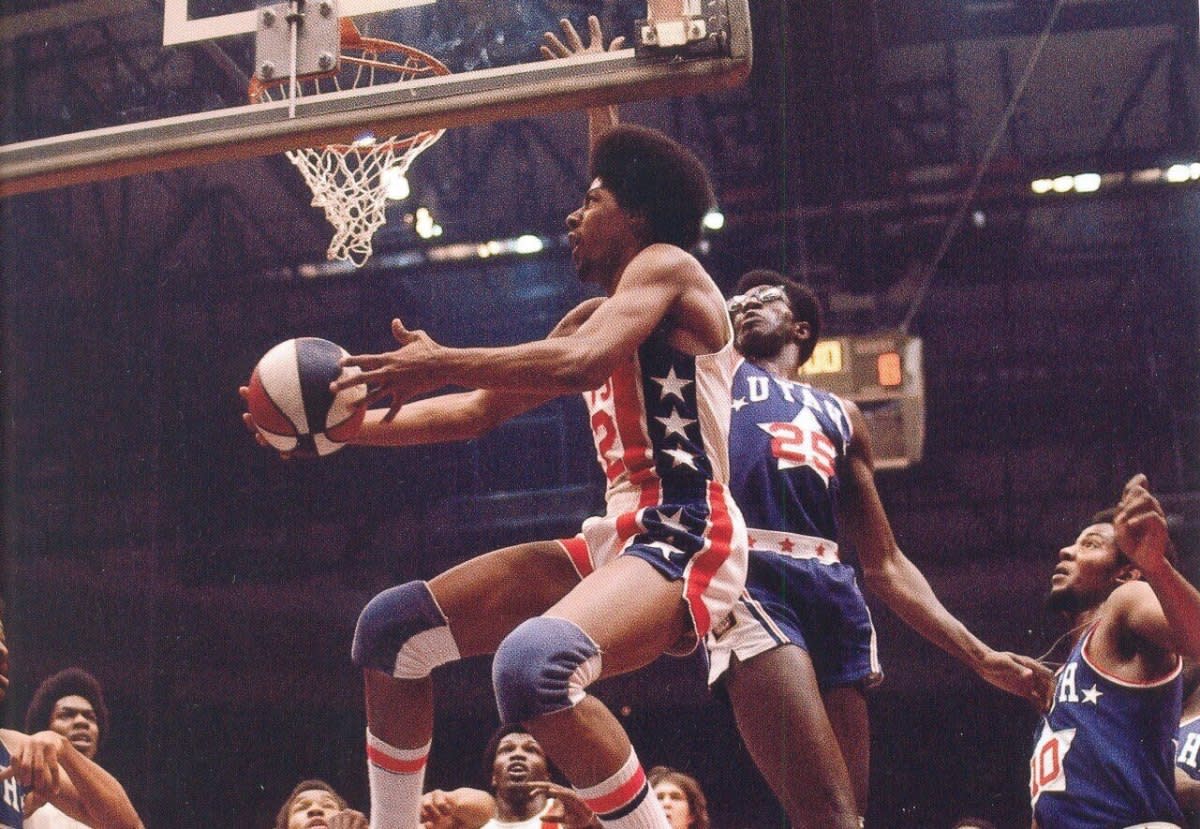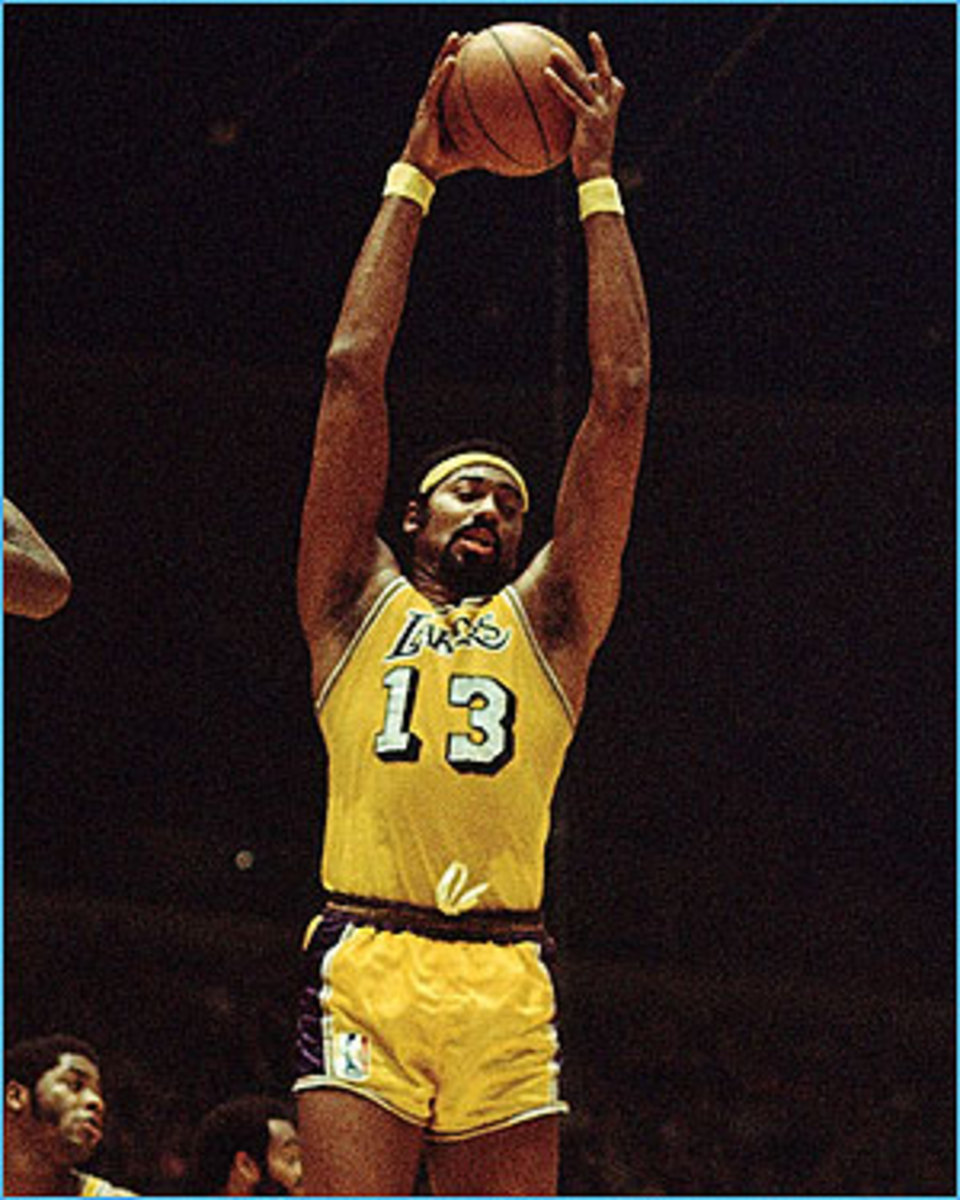- HubPages»
- Sports and Recreation»
- Team Sports»
- Basketball
2014-2015 ACC Basketball Preview
Last season’s version of the ACC suffered greatly following huge losses to graduation and the NBA. This year the conference as a whole landed 19 of the top 100 recruits overall (per ESPN.com); with plenty of returning talent, several impact transfers, and two major coaching upgrades, the conference should be much improved and emerge as the national powerhouse it has been expected to become since the current realignment was announced. The addition of Louisville to Duke, North Carolina, and last year’s newcomer Syracuse creates a big 4 of some of the nation’s premiere programs, accounting for 6 of the 14 titles won this century and 12 titles since 1980. Duke, North Carolina, and Louisville represent three of the top four recruiting classes in the country, and, combined with strong returning rosters, should all be considered national title contenders.
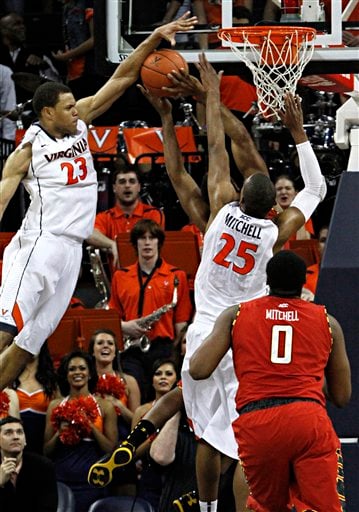
Virginia Cavaliers
2013-2014: 30-7, 16-2 in the ACC; lost to Michigan St. in the Sweet 16
Preseason Projection: 5th in the ACC; NCAA Round of 32
Final Standing: 29-3, 16-2 in the ACC (1st); Lost to Michigan St. in the NCAA Round of 32
Departures: Joe Harris (12.0 ppg., 40.% 3pt.; drafted in the 2nd round of the NBA Draft) and Akil Mitchell (6.8 ppg., 7.0 rpg.), who will play professionally somewhere, graduated.
Last season was a huge breakthrough for Tony Bennett's Cavaliers, but the graduation of Harris and particularly Mitchell could alter the team's outlook.
The backcourt will still be in excellent shape. As much attention as Tyler Ennis garnered at Syracuse, London Perrantes was also tremendously efficient throughout his freshman year, finishing with a better than 3 to 1 assist to turnover ratio. Unlike Ennis, however, Perrantes actually got better down the stretch. Over the team's last 11 games, Perrantes averaged 8.7 points on an impressive 61.5% shooting from behind the arc. He could emerge as a star as a sophomore. He'll be joined in the backcourt by the team's leading scorer Malcolm Brogdon (12.7 ppg., 5.4 rpg., 37.0% 3pt.). Brogdon also served as the team's backup point guard a season ago. The Cavaliers will also add Devon Hall, a large, smooth passing redshirt freshman point guard that was ranked as a top 80 recruit by Rivals. With so many capable ballhandlers, offensive efficiency should again be a strength (the team was 38th in the country in assist to turnover ratio a season ago), and Hall's passing could help create more open looks.
The player with the most potential for improvement on this team is junior small forward Justin Anderson (7.8 ppg.). Anderson is one of the strongest, most physically explosive players in the country and is a potential difference maker at both ends of the court. While he did make several big shots for the team a season ago, he hasn't had many chances at the offensive end to this point; however, that should change with the departure of Harris. Bennett has also added B.J. Stith, a smooth shooting top 70 recruit that is the son of former Cavalier Bryant Stith.
With the possible exception of K.J. McDaniels, Akil Mitchell's absence may be felt more than any other departed ACC player. Junior Mike Tobey is still adding strength but is a solid post scorer, while senior Anthony Gill (8.6 ppg., 4.0 rpg.) was an effective and energetic scorer off the bench after tranferring from South Carolina. Evan Nolte is likely to return to his role as a dangerous stretch four. While they're all solid offensive players, none of them is a standout at the defensive end or on the boards. Senior Darion Atkins is athletic and will be able to provide some shot blocking off the bench, and 6-8 freshman Isaiah Wilkins may offer more of the same, but no one can match Mitchell's hands and feet as both an on the ball and help defender or his ability to gather out of area rebounds at both ends of the floor. He was perfect for Bennett's pack line defense; it simply won't rotate nearly as smoothly without him.
Despite the loss of Harris, Virginia may actually improve offensively as its young backcourt continues to mature. The team was 238th in the nation in three pointers made per game; that could also improve if Nolte sees time at power forward. However, the loss of Akil Mitchell will surely have an impact on a team that finished last season 1st in the nation in scoring defense and 15th in rebounding margin. Tony Bennett only recruits players with size that can defend, and his teams will always thrive in those areas- just not quite as much as a season ago. With so much talent accumulated by some of the other teams in the conference, Virginia may not be able to win a second ACC title this season, but they should safely return to the NCAA Tournament.
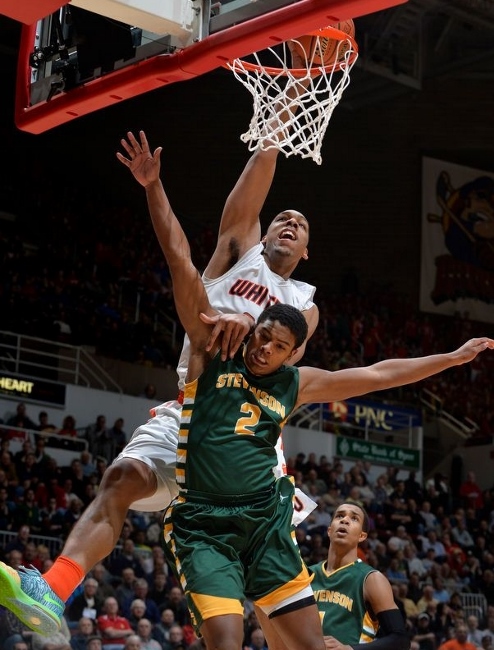
Duke Blue Devils
2013-2014: 26-9, 13-5 in the ACC; lost to Mercer in the NCAA Round of 64
Preseason Projection: 2nd in the ACC; NCAA Final Four
Final Standing: 29-4, 15-3 in the ACC (2nd); National Champions
Departures: Jabari Parker (19.1 ppg., 8.7 rpg.) was the number 2 pick in the NBA Draft; Rodney Hood (16.9 ppg., 3.9 rpg., 42.0% 3pt.) was taken 23rd; long time team leader Tyler Thornton (45.0% 3pt.), shooting specialist Andre Dawkins (7.9 ppg., 42.0% 3pt.), and Josh Hairston graduated.
Following a disappointing season that ended shockingly early with a loss to Mercer in the NCAA Round of 64, Duke must replace two first round picks and three of their top four scorers. However, the addition of the nation's top recruiting class will again create high expectations in Durham.
Duke appears to have a new point guard in freshman Tyus Jones, a top five recruit with a reputation as a sharpshooter and big time scorer. Quinn Cook (11.6 ppg. 4.4 apg., 37.1% 3pt.) is the team's top returning scorer, and will be looking to redeem himself after inexplicably losing his starting spot to a clearly less talented Tyler Thornton; it is somewhat surprising that he is already being counted out as the team's primary ballhandler. Jones also has a reputation as a poor defender, so Cook should still see his share of opportunities. After a breakout freshman year that saw him poised to be a first round draft pick, Rasheed Sulaimon (9.9 ppg., 41.0% 3pt.) found himself in Krzyzewski's dog house and out of the rotation at various times last season. While the expectation is that he will start at shooting guard or small forward, there will be plenty of competition, most notably from Cook and Justice Winslow. Winslow, a top 10 recruit, is a smart player that can create for his teammates, score, and defend multiple positions. Also in the mix will be Matt Jones, an athletic top 25 recruit a season ago that received limited minutes as a freshman, and Grayson Allen, an offensive playmaker and top 25 recruit in this year's class.
Both literally and figuratively, the biggest piece to Duke's puzzle will be gigantic 6-11, 265 pound Jahlil Okafor, the number one recruit in the country.While not a shot blocker, Okafor should immediately dominate the paint through both rebounding and post scoring. As great as Mason Plumlee eventually became, Okafor could represent Duke's first true post scorer since Sheldon Williams. He will be joined by junior Amile Jefferson, who continues to add weight to his frame after becoming a dominant rebounder in his own right as a sophomore. After a slow start, Jefferson averaged 7.8 boards per game over the last 26 games of the season. Duke finished 120th in the country in rebounding a season ago; that should improve dramatically with Okafor. The only true big man off the bench will be athletic seven footer Marshall Plumlee, who finally received a few opportunities to play as a sophomore and, for the most part, took advantage of them. While his playing time can't really be guaranteed after apparently being out of favor with Krzyzewski for so long, this could be his break out season.
The graduation of Tyler Thornton and Josh Hairston may benefit Duke as well. While they may have consistently done what Krzyzewski wanted, they simply weren't talented enough to keep other players off the floor, yet somehow that was what they often managed to do. Krzyzewski is left with ten McDonald's All-Americans to choose from- as many as Kentucky, who many will consider the favorite to win a national title. His Blue Devils were 268th in the country in field goal percentage defense a season ago, but scoring inside against Duke will be an entirely different undertaking with Okafor in the mix. With two top of the line point guards, offensive efficiency will be a strength, and having an inside scorer to go with all of their shooters will again make Duke one of the premiere offensive teams in the country. Duke should again be considered a favorite to make the Final Four and a national title contender; however, in a loaded ACC, that doesn't necessarily make them the clear cut favorite to win their own conference.
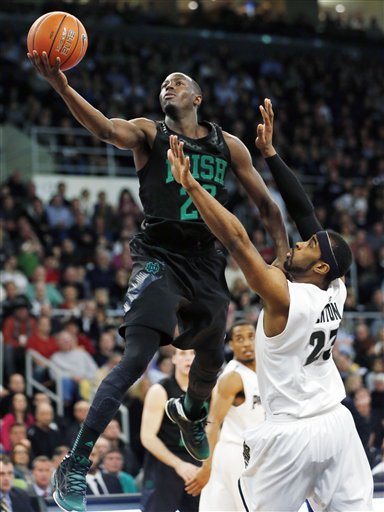
Notre Dame Fighting Irish
2013-2014: 15-17, 6-12 in the ACC
Preseason Projection: 5th in the ACC; NCAA Sweet 16
Final Standing: 29-5, 14-4 in the ACC (3rd); lost to Kentucky in the Elite 8
Departures: Eric Atkins (13.9 ppg., 4.9 apg., 37.0% 3pt.), Garrick Sherman (13.5 ppg., 7.3 rpg.), and Tom Knight graduated.
After seven consecutive seasons with 21 or more wins, Notre Dame failed to make the postseason in their first season in the ACC. At first glance, it would seem that the wheels came off when Jerian Grant received an academic suspension and Demetrius Jackson wasn't immediately prepared for a starring role. That certainly had something to do with it, but not on the offensive end of the court; the Irish still finished 14th in the country in assist to turnover ratio. The primary letdown was at the defensive end, where they dropped to 245th in field goal percentage defense and a scary 334th in 3pt.% defense. While the athletic, 6-5 Grant (19.0 ppg., 6.2 apg., 40.8% 3pt. in 12 games prior to his suspension) would have helped defend the perimeter, his absence couldn't have been the only problem.
Jerian Grant was putting up impressive numbers before his suspension, and should be able to move up draft boards if he picks up where he left off. His return gives the Irish a star and a great first step in fixing it's broken defense, but the departure of Atkins means someone else has to step up. Ideally it will be Jackson (6.0 ppg., 41.7% 3pt.), a McDonald's All-American that shot reasonably well but did little else to contribute as a freshman. Frustration and expectations eventually got so out of hand that he needed to take a short break from the team. Both Brey and talent evaluators were excited by Jackson's athleticism at both ends and his ability to create off the dribble and set up his teammates. Hopefully, he will be able to put everything together as a sophomore.
Beyond Jackson, the candidates to help the Irish improve will be fellow sophomores Steve Vasturia and V.J. Beachem, both of whom may have been slowed by late growth spurts. Vasturia was able to provide some needed scoring and toughness at the end of the season, averaging 7.6 points over the last 10 games. The 6-8 Beachem was a top 70 recruit that played sparingly last season due to a prolonged shooting slump and a 187 pound frame. He has never been noted as a defender, but hopefully he can now add weight and be ready to contribute at both ends.
If there is one other player that Brey knows he will be able to count on, it's senior forward Pat Connaughton (13.8 ppg., 7.1 rpg., 3.0 apg., 37.8% 3pt.). Now doubling as a minor league baseball player, he is an energetic leader at both ends of the floor. If Jackson, Vasturia, and Beachem are able to improve, Connaughton could spend time at power forward in a move similar to what the team did with Scott Martin; with returning bigs lacking mobility, it would definitely help defend the perimeter. If Connaughton is stuck at small forward, two newcomers may get their chances. The team's top recruit, undersized but long armed four star power forward Bonzie Colson (6-6, 215 lbs.), is one option. He can play inside and out and offers the versatility Brey likes to have at power forward. Redshirt freshman Austin Torres could also provide the athleticism the team was missing at the position if he is adequately recovered from a knee injury.
With the graduation of Garrick Sherman, it is unclear if Notre Dame will have the type of dominant post scorer it has enjoyed over the past few years. Junior Zach Auguste (6.7 ppg., 4.3 rpg.) is the leading candidate; while he should be able to replace Sherman's rebounding, he hasn't shown much potential as a scorer.
The return of Grant and the potential improvement of last year's freshman class could allow last season's failures to remain an anomaly- it was the first time in Brey's tenure that Notre Dame did not play in the postseason. Offense has never been a problem for Mike Brey's Irish; the test will be if last year's atrocious defense can be addressed.
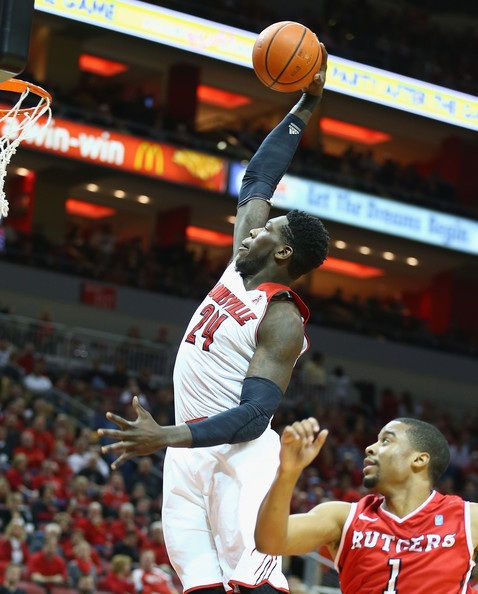
Louisville Cardinals
2013-2014: 31-6, 15-3 in the American Athletic Conference; lost to Kentucky in the Sweet 16
Preseason Projection: 3rd in the ACC; NCAA Elite 8
Final Standing: 24-8, 12-6 in the ACC (4th); lost to Michigan St. in the NCAA Elite 8
Departures: Russ Smith (18.2 ppg., 4.6 apg., 2.0 spg., 38.7% 3pt.) graduated and was taken in the 2nd round of the NBA Draft; Luke Hancock (12.3 ppg.) and Stephan Van Treese (5.7 rpg.) graduated.
Among the keys to Louisville's success over the past few years have been it's offensive efficiency and ability to pressure the basketball (they were 16th in assist to turnover ratio and 1st in turnover margin a season ago, 48th and 3rd respectively during their title run), which has been keyed by having two quick point guards on the floor together. While Smith's scoring and leadership will be missed, that should continue this season with the return of Chris Jones and Terry Rozier and the addition of top 40 prospect Quentin Snider. Jones (10.2 ppg., 2.2 spg., 37.7% 3pt.) led the team in steals a season ago as a junior college transfer and should key the defense again as a senior. Rozier (7.0 ppg., 37.1% 3pt.), a top 15 recruit a season ago, had a strong freshman year off the bench behind Smith and Jones. Snider fits in perfectly with that theme; he's small, quick, and smart. Any ACC team with a lack of depth at point guard will have problems with the Cardinals.
Wayne Blackshear (8.2 ppg., 39.5% 3pt.), originally a top 15 recruit, will have a chance to start on the wing as a senior. While he is a solid defender, his offensive game has never really developed beyond shooting from distance. If Pitino were to want a larger lineup, he could slide Blackshear into the backcourt. The other option at small forward will be Shaqquan Aaron (6-7, 175 lbs.), a top 30 prospect that will give the team yet another strong ballhandler and passer when he's on the floor. While a great athlete, he may need to add weight to be able to compete consistently at the defensive end.
Montrezl Harrell's (14.0 ppg., 8.4 rpg., 1.3 bpg.) surprising decision to return despite being a likely lottery pick quickly raised expectations for the Cardinals in their first season in the ACC. He's physically explosive at both ends of the floor and will help protect the rim. Joining him at center will be 6-10 sophomore Mangok Mathiang, an exciting young project that showed promise early last season and could lead the conference in blocked shots (1.4 per game in 14.7 minutes as a freshman). 6-10 freshman Chinanu Onuaku, a top 60 recruit, will provide another shot blocker and strong rebounder. He is the younger brother of bruising former Syracuse center Arinze Onuaku. Another top 70 recruit, Jaylen Johnson, should have a game similar to Harrell's. At 7-1 and just under 200 pounds as a high school senior, top 70 recruit Anas Mahmoud seems like a likely redshirt candidate considering the teams depth and his need to add weight.
With all of the great defense they will see in the ACC, Louisville could see a small decline in their overall offensive efficiency numbers, but no one will be better equipped to handle and generate pressure than the Cardinals. Rick Pitino will also have more frontcourt depth and shot blocking than he has had in a very long time. In their first season in the ACC, the Cardinals will provide a third team that should compete for the conference title and be in contention for a national title.
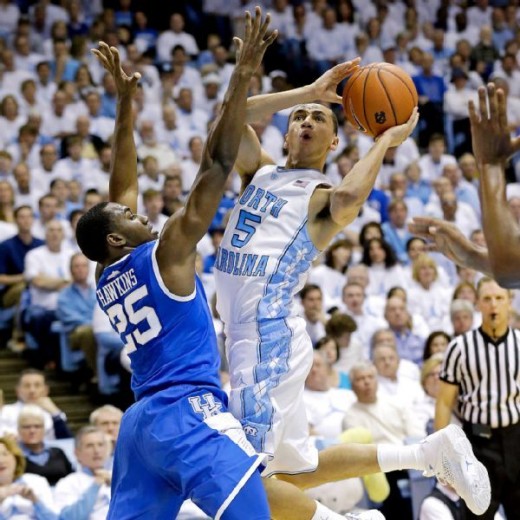
North Carolina Tar Heels
2013-2014: 24-10, 13-5 in the ACC; lost to Iowa St. in the NCAA Round of 32
Preseason Projection: 1st in the ACC; National Runner-Up
Final Standing: 24-11, 11-7 in the ACC (5th); lost to Wisconsin in the Sweet 16
Departures: Leslie McDonald (10.4 ppg., 31.2% 3pt.) graduated; James Michael McAdoo (14.2 ppg., 6.8 rpg.), who would have been a lottery pick two years ago, finally departed for the NBA draft, but went undrafted.
Outlook: Marcus Paige (17.5 ppg., 4.2 apg., 38.9% 3pt.) became one of the premiere players in the conference as a sophomore, and should shoot up draft boards if he is able to add strength to his frame. He was forced to bear a tremendous amount of the offensive burden as the team's only real perimeter scoring threat through most of the season; however, last season's weakness, a lack of perimeter depth, will be turned into a strength by the addition of three McDonald's All Americans in Joel Berry, Justin Jackson, and Theo Pinson. Berry, a top 20 recruit nationally, is a physically strong drive and dish point guard – a perfect compliment to Paige that will allow him to play off the ball at times. The 6-7 Jackson, a top 10 recruit, is considered the best shooter among the freshmen, and could challenge Berry for a starting spot on the perimeter. With the exception of his atrocious shooting, Nate Britt was solid but not spectacular as a freshman; with all of the additions to the perimeter, and Berry in particular, minutes may be hard to come by for the sophomore. Like Paige, J.P. Tokoto (9.3 ppg., 5.8 rpg., 3.0 apg.) had a breakout sophomore season, serving as a high energy defensive catalyst as well as an offensive playmaker. Another offseason working with Hubert Davis could finally make him a threat from 3 point range as well. Pinson, another top 10 recruit, is a remarkably similar player to Tokoto (he also does everything well except shoot with range). He will see his share of minutes, but it is unlikely Williams will leave Paige as the only three point threat on the floor, and Tokoto will start.
Brice Johnson and Kennedy Meeks complement each other perfectly, and should be one of the premiere offensive frontcourts in the country. Johnson (10.3 ppg., 6.1 rpg.) will likely be the team's star interior player following McAdoo's departure. Like Paige, he just needs to add bulk to become a high end NBA prospect. He is a mobile and skilled mid-range scorer similar to McAdoo as well as an emerging rebounder and the team's best shot blocker. Meeks (7.6 ppg., 6.1 rpg.) is an agile and highly skilled widebody that was immediately productive as a freshman, although he could stand to improve at the defensive end. He is reportedly down to a slimmer yet more muscular 275 pounds, which will help both his stamina and his ability to defend. Isaiah Hicks is likely the best athlete in the frontcourt. A top 20 recruit a season ago, Hicks looked lost at times as a freshman, often being forced to play out of position as an emergency small forward. With a year in the system, he may very well be the most improved of the returning players. North Carolina's largest interior option, junior project Joel James (6-10, 280 lbs.), may have progressed enough to be a contributor as well. Even without McAdoo, UNC should continue to beat people up on the boards (they were 29th in the country in rebounding margin a season ago). Desmond Hubert and Jackson Simmons have both stuck around for their senior seasons despite being talented enough to be important players in other programs.
For the first time in three years (and the team's last Elite 8 appearance), Roy Williams will not have to improvise on the fly to compensate for personnel limitations. Two seasons ago, a glut of perimeter players and a limited number of big men ready to contribute forced Williams to play small to turn things around over the second half of the season. Last year, a glut of big men and a total of four perimeter players left little choice other than to turn to a half court, defense oriented approach which doomed the team in its NCAA Tournament matchup against last season's king of small ball and eventual champion UConn. Now, with quality depth at every position, Williams will be free to play his preferred style and will also have the option to make adjustments when necessary. If the team scores the way it should and holds on to last season's defensive intensity, the Tar Heels could be a very serious title contender in 2014-2015.
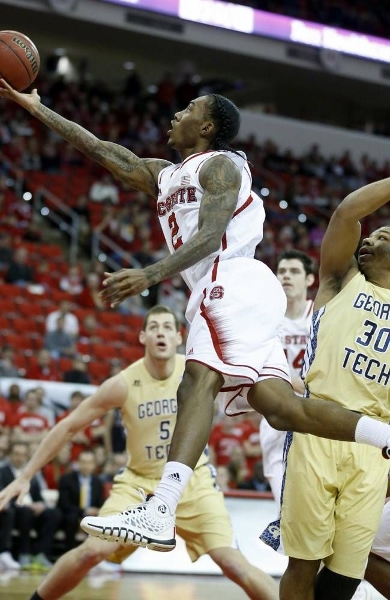
North Carolina State Wolfpack
2013-2014: 22-14, 9-9 in the ACC; lost to Saint Louis in the NCAA Round of 64
Preseason Projection: 6th in the ACC; NCAA Round of 32
Final Standing: 20-13, 10-8 in the ACC (Tie for 6th); lost to Louisville in the Sweet 16
Departures: T.J. Warren (24.9 ppg., 7.1 rpg., 1.8 spg.) was drafted 14th overall in the NBA Draft; Jordan Vandenberg (4.7 rpg., 1.4 bpg.) graduated; Tyler Lewis (3.8 apg.) transferred to Butler.
Lewis' departure leaves the feline quick Cat Barber, a top 15 recruit a season ago, as the only real show in town at point guard- and oh, what an entertaining show it could be. While Lewis was able to orchestrate the offense effectively, he was never aggressive in finding offense for himself despite being a capable 3 point shooter, and he was a clear liability defensively. Barber (8.5 ppg., 3.5 apg.) seemed unclear on what to do offensively as a freshman, so the offense tended to stagnate other that the shots he and Warren were able to create for themselves. While he will undoubtedly be one of the premiere defensive point guards in the conference, the hope is that, with a year in the system, he will now be able to get his teammates involved and more effectively find his own offense as well. He will have to for the Wolfpack to succeed- he really doesn't have a backup.
Perimeter shooting was a major weakness for the Wolfpack a season ago (they finished 330th in the country in made 3pt field goals), as rising senior Ralston Turner (10.5 ppg., 37.2% 3pt.) was the only player that could effectively help space the floor. The addition of Alabama transfer Trevor Lacey, a former top 40 recruit, and 6-7 Caleb Martin, a top 50 recruit, should help alleviate that problem. Lacey averaged 11.3 points and shot 37.3% from 3 as a sophomore in the SEC. Caleb Martin will be joined by his twin Cody, a top 70 recruit who is 15 pounds lighter. Desmond Lee, a highly regarded JC recruit a season ago, shot horribly and may find it hard to find playing time.
North Carolina St. also had a problem rebounding the basketball; they finished 213th in rebounding margin, which should be expected with a frontcourt filled almost exclusively with freshmen and 1 willing but immobile center. Kyle Washington showed the most promise as a post scorer, and if he can add weight to his 6-9 frame he should improve significantly as a rebounder as well. Lennard Freeman (5.7 rpg.) was a pleasant surprise as a freshman, finishing second on the team in rebounding while providing toughness in the post. 6-8 freshman Abdul-Malik Abu, a top 40 recruit, is a remarkably similar player that should provide more of the same. Beejay Anya, a top 40 recruit a season ago, showed off his great length and hands in short bursts as a freshman (he led the team in blocks, averaging 1.4 per game, despite averaging just 11.8 minutes); unfortunately, his weight was so out of control (nearly 350 lbs. by season's end) that short bursts were all that could be asked of him. He has lost over 50 pounds of that weight during the offseason; if he could get back to his high school weight of 275, he would be an intimidating presence protecting the rim and on the boards, and his agility and hands would allow him to contribute offensively as well.
While offensive efficiency may decrease with the departure of Lewis and Warren, the team will be more dangerous from behind the arc, which should make scoring inside easier as well. In the frontcourt, three rising sophomores should improve their performance on the boards. While all of the Wolfpack's eggs will be very much in the Cat Barber basket at point guard, the bottom line is that there is suddenly a lot of talent in Raleigh, and a fourth consecutive NCAA Tournament appearance seems likely for Mark Gottfried and company, with a second trip to the Sweet Sixteen a distinct possibility.
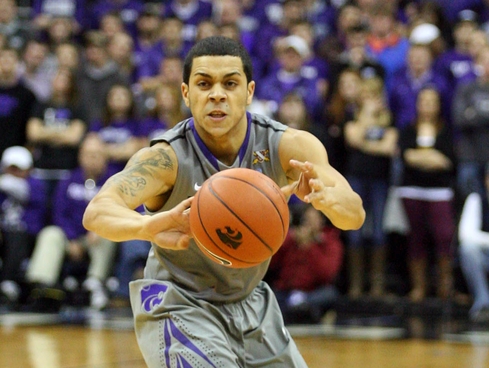
Miami Hurricanes
2013-2014: 17-16, 7-11 in the ACC
Preseason Projection: 4th in the ACC; NCAA Round of 32
Final Standing: 21-12, 10-8 in the ACC (tie for 6th); lost to Stanford in the NIT Title Game
Departures: Rion Brown (15.5 ppg., 5.8 rpg.), Garrius Adams (10.2 ppg., 4.8 rpg.), Donnavan Kirk (7.5 ppg., 5.0 rpg.), and Erik Swoope (signed to play tight end in the NFL by the Indianapolis Colts) graduated; following a suspension and decreasing minutes late in the season, James Kelly (6.0 ppg., 3.7 rpg., 40.5% 3pt.) transferred to Marshall despite being the likely starter at power forward.
No one should be more excited about this season than Hurricanes fans. After suffering through a tough rebuilding year, the cupboards are no longer bear as transfers Angel Rodriguez and Sheldon McClellan finally become eligible. Rodriguez (11.4 ppg., 5.2 apg., 1.5 spg. in 2012-2013) departed Kansas St. as one of the premiere point guards in the nation, and should pick up where he left off for Jim Larranaga. McClellan (13.5 ppg., 3.9 rpg. In 2012-2013) will be looking for redemption after struggling with his shot as a sophomore on a Texas team with limited complimentary talent due to Myck Kabongo's unusual suspension. They will have plenty of help on the perimeter, as redshirt freshman Deandre Burnett, top 60 recruit Ja'Quan Newton, and top 100 recruit recruit James Palmer are all exciting prospects. Burnett missed last season with a wrist injury but is a volume scorer that would have been very useful. Newton is a combo guard that is efficient with the ball and excels at getting into the paint and exploding to the rim, while Palmer is a shooter. Last season's point guard, Manu Lecomte, struggled as the main man but shot well from deep and could also be a solid backup. With all of the depth at guard, the 6-5, 205 pound McClellan will likely end up at small forward. Promising 6-6 sophomore Davon Reed, an athletic defender and yet another strong perimeter shooter, should see time there as well after recovering from an offseason knee injury.
While Larranaga will have plenty of options on the perimeter, everyone in the frontcourt needs to pan out quickly. 7-1 Tonye Jekiri was a bit of a disappointment as a sophomore, but he is still a work in progress loaded with potential. He did finish the season strong, averaging 9 rebounds and 1.6 blocks over his last five games. The most important part of his maturation process will be staying out of foul trouble, and the Hurricanes really need that to happen this season. The other options are newcomers that can stretch the floor the way Larranaga prefers. Ivan Cruz Uceda (6-10, 235 lbs.), a highly regarded junior college recruit, is a skilled passer that could also emerge the team's best rebounder. Omar Sherman may also provide a post scoring threat; he's a top 100 recruit with a body (6-9, 250 lbs.) that's ready for contact. Due to a technicality in NCAA transfer rules, Uceda has been ruled ineligible for the fall semester, which will make things significantly more difficult for Miami in their non-conference schedule. In the meantime, graduate transfer Joe Thomas, whose production was very limited at Niagara, may see time as an emergency big man.
Jim Larranaga suddenly has a load of talent to work with, particularly on the offensive end. While many of the players are newcomers, three of them- Rodriguez, McClellan, and Burnett- already have a year in the program. The lack of frontcourt depth, particularly during Uceda's suspension, and the very real possibility of chronic foul problems could mean occasional four guard lineups, but that is something Larranaga has experience with; his George Mason Final Four team featured 0 players over 6-5 off the bench (although if the team is going to be at a disadvantage it will likely be rebounding and defending small forwards with size). While they will be one of the younger teams in a loaded ACC, Miami should be a solid NCAA Tournament team that is capable of winning a game or two once there.
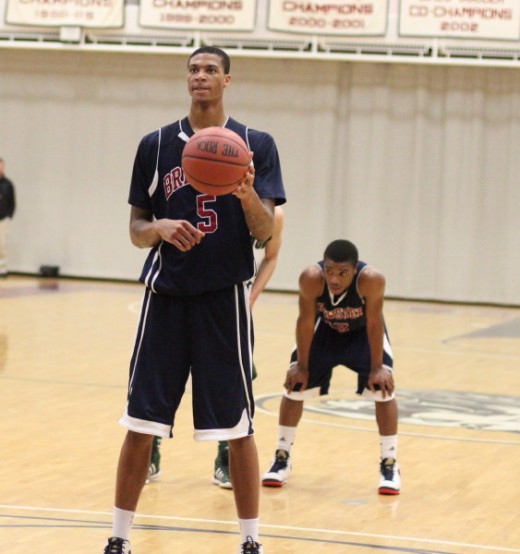
Syracuse Orange
2013-2014: 28-6, 14-4 in the ACC; lost to Dayton in the NCAA Round of 32
Preseason Projection: 9th in the ACC; NIT
Final Standing: 18-3, 9-9 in the ACC (8th)
Departures: C.J. Fair (16.5 ppg., 6.4 rpg.), who will play professionally somewhere, and Baye-Moussa Keita graduated; Tyler Ennis (12.9 ppg., 5.5 apg., 2.1 spg., 35.3% 3pt.) was selected 18th in the NBA Draft, and Jerami Grant (12.1 ppg., 6.8 rpg.) was selected in the 2nd Round.
Like several other teams in the conference, Syracuse will undergo a major roster overhaul this season. Jim Boeheim used a seven man rotation last year; when there was an injury, he used six rather than using the next man down. Four of those seven, including the top three players, have moved on, and with one exception the reinforcements available are not as promising as those being welcomed by Duke and Miami.
Kaleb Joseph is the freshman that will be asked to take over for the freshman that took over so well for the sophomore. He has already pointed out that he isn't Tyler Ennis; the scouting reports all say that he is absolutely correct, and that is unlikely to be a good thing for the Orange. Ennis struggled down the stretch, but he still finished with a better than 3 to 1 assist to turnover ratio in addition to being a clutch scorer and shutdown defender. By contrast, Joseph, a top 70 recruit, is a score first point guard that has actually struggled with his ballhandling at times. That could especially spell doom for a shooting guard that can't create his own shot. Trevor Cooney (12.1 ppg., 37.5% 3pt.) is a streak shooter that ended last season ice cold; while he is certainly very capable, it will be harder to find open shots without a forward capable of stretching the floor and with a point guard that isn't really trying to set him up. If the Orange perimeter offense is going to exist at all, it will have to come from players that have done little early in their careers. Michael Gbinije could provide some of the scoring he was expected to as a top 20 recruit coming out of high school. While he only received limited minutes a season ago, he will almost certainly get his chances this season. Forward Tyler Robertson will attempt to replace Fair's scoring; he was a top 30 recruit a season ago that Boeheim clearly did not feel was ready to play as a freshman. B.J. Johnson, a top 90 recruit that was simply to thin to play (he was really a year younger than everyone else), will possibly be in the mix as well. That is an awful lot of ifs for the Orange, and none of these players are the same caliber as those being added by the teams at the top of the conference.
The now likely absence of Dajuan Coleman, whose knees have been unable to support his massive frame, means that the Orange will also have less depth in the frontcourt than they have had in years. There is definitely still talent in the frontcourt; 6-10 freshman Chris McCullough, a top 15 recruit, offers the type of athleticism the Orange received from Grant- although it should be mentioned that Grant wasn't a star until his sophomore year. Rakeem Christmas (5.8 ppg., 5.1 rpg., 1.9 bpg.), a former top 10 recruit, returns to provide rebounding and shot blocking. Because of the lack of large bodies, Robertson could end up spending significant minutes as a stretch four, which could actually help the team offensively as It did with James Southerland two seasons ago.
Jim Boeheim has kept his Orange undefeated through January 1st four of the last five seasons. If he can come anywhere close to that this season with what, on paper, looks to be an extremely thin and potentially offensively challenged group, he will be doing the best coaching job of his career. The team will likely still be able to compete with defense, but a temporary fall to the middle of the pack in a loaded ACC would seem a more likely scenario for the Orange in what has to be considered a rebuilding year. It won't take long, however; this team has just one senior and no current NBA prospects, and Boeheim has already signed four top 100 recruits for the class of 2015.
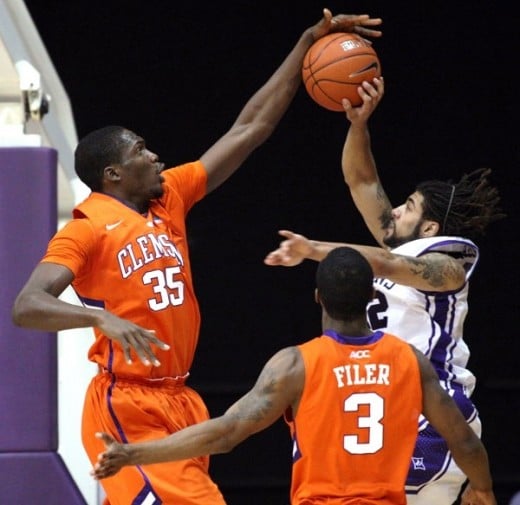
Clemson Tigers
2013-2014: 23-13, 10-8 in the ACC; lost to SMU in the NIT semifinals
Preseason Projection: 12th in the ACC
Final Standing: 16-15, 8-10 in the ACC (3 way tie for 9th)
Departures: K.J. McDaniels (17.1 ppg., 7.1 rpg., 2.8 bpg.) was taken in the 2nd round of the NBA Draft; Adonis Filer transferred to Florida Atlantic.
The Tigers had a breakthrough season of sorts in 2013-2014, ending with a strong showing in the NIT and resulting in a contract extension for head coach Brad Brownell. The departure of McDaniels will dictate substantial changes for Clemson, but the team still has the talent to remain competitive.
This Clemson team will rely heavily on a senior backcourt featuring two players that had breakthrough junior years. Rod Hall (9.7 ppg., 4.0 apg.) produced very little in his first two seasons; he will need to take another step forward as a senior, something that will be substantially more difficult without K.J. McDaniels. After essentially disappearing through the middle part of the season, Demarcus Harrison finished the year strong averaging 11.6 points per game on 38.8% 3pt shooting over his last 12 contests. Without McDaniels and Filer, junior Jordan Roper (7.4 ppg.) should see more opportunities and emerge as one of the most exciting players in the conference. While he struggled with his shot as a sophomore, he is a very capable 3pt shooter, and, at 5-11, he periodically explodes off the floor for two handed dunks. Sophomore Austin Ajukwe also showed promise as a long, athletic three point threat in sporadic minutes as a freshman. He could see time at both wing positions.
While they're not shot blockers, redshirt sophomore Jarron Blossomgame and freshman Donte Grantham have the athleticism to replace McDaniels' scoring in the paint and aggression on the boards. Blossomgame (5.0 rpg.) was merely ok as a freshman coming off a broken leg; he's not a natural power forward, but that is where Clemson needs him to play. Assuming he is now fully recovered from the injury, he could offer rebounding and inside scoring reminiscent of Antawn Jamison's early days at North Carolina. Grantham, a top 100 recruit, is the most likely candidate to replace McDaniels at small forward. He's an energetic high flier that should help on the boards at both ends.
The Tigers will still have some rim protection with rapidly progressing 6-10 junior Landry Nnoko (6.5 ppg., 6.2 rpg., 2.0 bpg.). Nnoko is a developing rebounder and has shown flashes as a post scorer; without McDaniels, it will become even more important that he stay out of foul trouble, something that he did seem to do better towards the end of last season. 6-10 sophomore project Side Djitte showed potential on the boards in limited minutes.
Like Virginia, Clemson was one of the premiere defensive teams in the country last year. They finished 17th in field goal percentage defense, 1st in 3pt percentage defense, and 8th in blocked shots per game. While they should still compete and be difficult to score against, the team will likely take a sizeable step back from that because of how special McDaniels was defensively; he could stay with anyone, block shots both on and off the ball, and alter perimeter shots as well. Offensively, with McDaniel's being the only player to average double figures a season ago, scoring will require more of a team effort. Again, Brad Brownell should still have a competitive team, but with the ACC being as strong as it is, a postseason appearance of any type won't come easily.
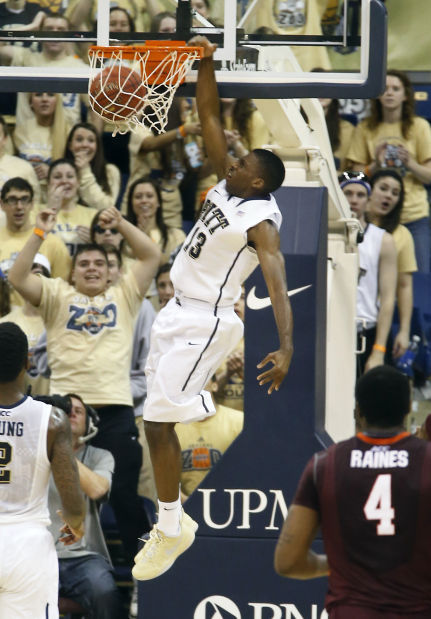
Pittsburgh Panthers
2013-2014: 26-10, 11-7 in the ACC; lost to Florida in the NCAA Round of 32
Preseason Projection: 10th in the ACC
Final Standing: 19-14, 18-10 in the ACC (3 way tie for 9th)
Departures: Lamar Patterson (17.1 ppg., 4.9 rpg., 4.3 apg., 38.8% 3pt.) and Talib Zanna (13.0 ppg., 8.6 rpg.) graduated.
Patterson's departure presents a huge problem for Jamie Dixon. He was the only player that was able to create his own shot, and he was also the player most adept at creating for his teammates. Junior James Robinson (7.6 ppg., 4.1 apg.) is an efficient guard that can hit an open 3, but he has no wiggle to his game; he doesn't break people down off the dribble and has shown no ability to actually create offense for himself or for his teammates. Cameron Wright (10.5 ppg.) is the leading returning scorer; he's an effective slasher, but can't shoot the 3. There is some hope in sophomore Josh Newkirk, who is capable of blowing by people and creating for teammates. He finished strong as a freshman, averaging 8 points over his last 8 games, including shooting 58.9% from 3. 6-8 Vanderbilt transfer Sheldon Jeter could earn a chance at small forward as well. There is potential here, but it will be no easy task to replace what Patterson provided.
Replacing Zanna's scoring and rebounding is likely to be an issue as well. Michael Young (6.0 ppg., 4.1 rpg., 35.7% 3pt.), a top 60 recruit a season ago, received ample opportunity to make an impact as a freshman, but his per minute numbers were thoroughly unimpressive. The same can be said of James Artis. Senior transfer Derrick Randall did rebound well in limited opportunities, but there just isn't much reason for optimism with this frontcourt. 6-10, 260 pound junior Joseph Uchebo was a highly regarded JC transfer a season ago, but barely got on the floor as a sophomore.
Pitt has been hemorrhaging talent through transfers for a few years now. While that didn't happen this offseason, this is the first time since the beginning of Jamie Dixon's tenure that the program did not land a top 100 recruit. While there is still talent here and Pitt will undoubtedly defend well enough to still be a tough game for anyone, things are not exactly looking up for the Panthers. With so many ACC teams improving, it's possible that Pittsburgh will miss the postseason entirely for the first time this century.
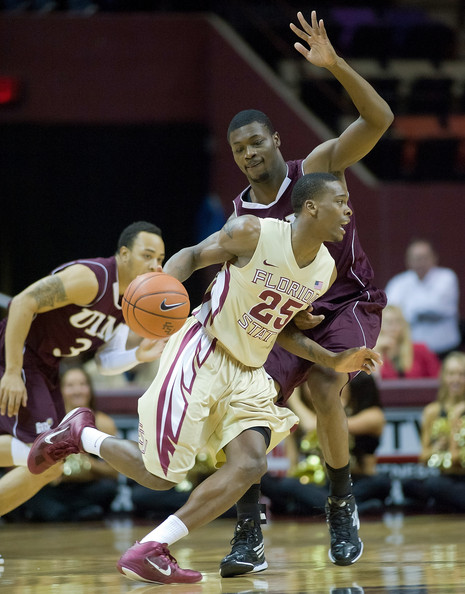
Florida State Seminoles
2013-2014: 22-14, 9-9 in the ACC; lost to Minnesota in the NIT semifinals
Preseason Projection:7th in the ACC; NCAA Round of 32
Final Standing: 17-16, 8-10 in the ACC (3 way tie for 9th)
Departures: Okaro White (13.6 ppg., 6.8 rpg., 37.5% 3pt.), who will play professionally somewhere, and Ian Miller (13.7 ppg., 39.9% 3pt.) graduated.
Florida State's achilles heel is the same every year; they have a routinely stagnant offense that results in one of the nation's least efficient teams (they finished last season 327th in assist to turnover ratio and 285th in turnover margin). This group of perimeter players does offer some hope of changing that (even a 1 to 1 assist to turnover ratio as a team would be outstanding). 5-10 junior college transfer Dayshawn Watkins is the first true pass first, drive and dish point guard the Seminoles have had in some time. If he were to be effective in his first year of major college basketball, FSU would suddenly become very dangerous. Last season's starter, junior Devon Bookert (8.5 ppg., 43.1% 3pt.), may still prove to be a viable option as well; he's a great shooter that was inconsistent at best handling and distributing the basketball as a sophomore. Leonard Hamilton's offense is normally dependent on guards that can create shots for themselves, and the ineligibility of emerging star Aaron Thomas (14.5 ppg., 4.2 rpg., 37.1% 3pt.) definitely hurts in that area, but Xavier Rathan-Mayes and Montay Brandon can create for themselves as well. Rathan-Mayes was a top 50 recruit that was academically ineligible last season; he should provide strong long and mid-range shooting similar to Ian Miller. Brandon (7.7 ppg., 4.9 apg.) had a late growth spurt and may only be scratching the surface of what he can do.
Inside, the Seminoles will be gigantic, and should finish among the top 10 shot blocking teams in the country. 6-9 sophomore Jarquez Smith, a top 80 recruit a season ago that received a fairly consistent ten minutes a game as a freshman, should be the team's most improved player as he attempts to fill Okaro White's shoes at power forward. He can replace some, but not all, of White's athleticism, and has the skill to provide outside shooting as well. He averaged a strong .7 blocks per game in his ten minutes of work. The other option at power forward will be athletic four star freshman Phil Coker, a late addition that will be an active and aggressive rebounder if he's ready physically. In the middle, 7-3 junior Boris Bojanovsky is still trying to add weight, but did take a large step forward as a sophomore. He led the team with 1.9 blocks per game. The leading shot blocker from two years ago will return as well; 7-0 Kiel Turpin, who averaged 1.3 blocks in 14.7 minutes per game as a junior, was granted a second medical redshirt after missing last season with a patella tendon injury. Massive 7-1, 290 pound junior Michael Ojo is also back; he has the most potential as a rebounder among the centers.
Leonard Hamilton has kept Florida State as a consistent middle of the pack ACC team and postseason contender for years, and last season ended with a strong run in the NIT. Because of their offensive deficiencies, they are a horrible matchup for team's like Louisville that can generate pressure and thrive under it. Still, the defense will be outstanding, and the Seminoles could find their way into the NIT once again.
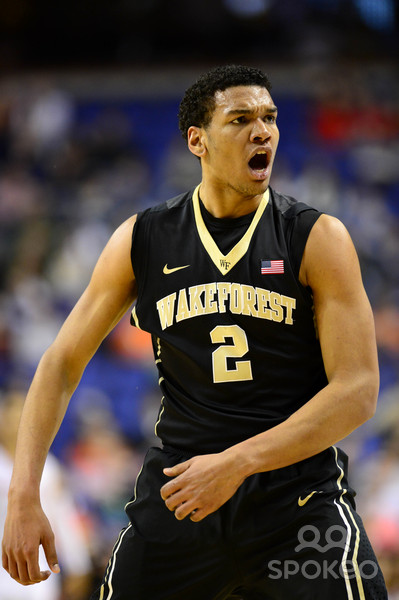
Wake Forest Demon Deacons
2013-2014: 17-16, 6-12 in the ACC
Preseason Projection: 15th in the ACC
Final Standing: 13-19, 5-13 in the ACC (12th)
Departures: Consistent four year starter Travis McKie (10.7, 4.1 rpg.) and Coron Williams (10.2 ppg., 40.3% 3pt.) graduated; Tyler Cavanaugh (8.8 ppg., 3.8 rpg.) transferred to George Washington and Arnaud Adala Moto (6.9 ppg., 5.2 rpg.) to Towson.
After some unexpected offseason losses, any wins that the Deacons are able to eke out will likely be the result of superhuman performances from the team's two returning stars, juniors Codi Miller-McIntyre and Devin Thomas. Miller-McIntyre (12.6 ppg., 4.2 apg.) showed resilience after a nightmarish freshman season, and will need to take another large step forward for the Deacons to be at all competitive. Thomas (11.1 ppg., 7.5 rpg.) has been dominant in the paint during his first two seasons, and will counted on even more on a team with limited depth.
The perimeter will be particularly hard hit by defections. Junior Madison Jones played extensively almost out of necessity last year, inexplicably starting in front of the substantially more productive Coron Williams for much of the season. The results were not impressive, but Wake Forest simply will not have many options. Freshman Mitchell Wilbekin, the younger brother of Florida Graduate Scottie Wilbekin, will get a chance to play beside Miller-McIntyre. Starting on the wing will likely be Aaron Roundtree III, a former top 90 recruit that has played little and produced even less in his first two seasons. He is at least a capable defender.
7-0, 240 pound junior Andre Washington was the favorite to join Thomas inside, but the late additions of two transfers gives Manning stronger options that may create a respectable frontcourt. 6-9 graduate transfer Darius Leonard was a capable stretch 5 at Campbell (10.2 ppg., 4.9 rpg., 38.0% 3pt.); he may actually serve as an upgrade to Cavanaugh. 6-10 Greek big man Konstantinos Mitoglou was a strong rebounder for his country's under 18 European championship team and may be ready to contribute as well. Washington has shown little to be optimistic about in his first two years,
As much of an upgrade as I believe Danny Manning will eventually prove to be, the shocking defection of players loyal to Jeff Bzdelik (were they somehow unaware of how bad they were?) has left too many holes for this team to be competitive in a loaded ACC. With the now Vanderbilt bound top 60 point guard Shelton Mitchell and rapidly improving juniors Arnaud Moto and Matt Cavanaugh, Manning's first year could have been the best the school has seen since 2010, but that isn't in the cards now. Hopefully, the season will be written off as one more ruined by Bzdelik's questionable hiring instead of immediately sending Manning down the same path with the fan base. If patience isn't shown by those outside the program, Wake Forest's basketball nightmare could continue indefinitely.
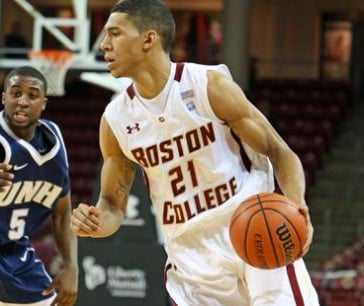
Boston College Eagles
2013-2014: 8-24, 4-14 in the ACC
Preseason Projection: 13th in the ACC
Final Standing: 13-19, 4-14 in the ACC (13th)
Departures: Ryan Anderson (14.3 ppg., 7.3 rpg.) transferred to Arizona and Joe Rahon (9.0 ppg., 35.4% 3pt.) transferred to St. Mary's.
Prior to Steve Donahue's departure, the Eagles appeared poised to bounce back from a disappointing season with a junior and senior laden roster. However, the coaching change has resulted in several significant roster changes for the Eagles. Olivier Hanlan (18.5 ppg., 34.7% 3pt.) decided to return as the team's best player, but Rahon, his backcourt mate through his first two seasons, bolted. Christian may have found an adequate replacement in graduate transfer Aaron Brown, who will compete with Lonnie Jackson and Patrick Heckman for a starting spot. Brown started his career at Temple and is coming off a strong season at Southern Miss (10.0 ppg., 4.3 rpg., 38.0% 3pt.). While he isn’t the offensive player Rahon was and won’t be as viable as a backup point guard, he is big and athletic enough (6-5, 210) that he may serve as an upgrade defensively and on the boards. The senior Jackson (7.0 ppg., 37.9% 3pt.) would be a solid offensive replacement; he has always been a dangerous shooter, but he is one of many physically lithe (6-4, 182) players on the team. Wiry, athletic senior Patrick Heckman (6.0 ppg., 34.6% 3pt.) is also a capable shooter and tries as hard as anyone; unfortunately, the result is often foul trouble. He could start on the wing. If his game matures and allows him to stay on the floor, he would provide a big boost both scoring and with the occasional offensive rebound. Athletic sophomore wing Garland Owens also shot the ball well in limited minutes as a freshman, and, like Brown, likely offers more potential at the defensive end and on the boards than some of his underweight teammates.
The addition of freshman Idrissa Diallo and the return of a moderately healthy Dennis Clifford likely would have fixed the most glaring problems that hurt BC so much last season, but with Anderson’s decision to transfer the team is likely to take a step down in post play overall. Diallo is raw offensively, but he’s 6-11, 235 pounds, athletic, and should be able to contribute immediately as a rim protector and rebounder. The 7-1, 250 pound Clifford showed a great deal of potential as a freshman three years ago, but has since suffered from knee injuries that forced him to miss all of last season. Any contribution from him would be a pleasant surprise. The athletic and willing but still undersized Eddie Odio (43.2% 3pt.) returns at power forward as a senior, and senior transfer Alex Dragicevich, who underwhelmed after transferring from Notre Dame, will again be forced into a role as a sharpshooting stretch four.
The hiring of Jim Christian, who has had some success in the past but for all intent and purpose looks like a step down from Steve Donahue (remember how good he was at Cornell?), led to the immediate transfers of Anderson and Rahon, but the late additions of Brown and Diallo does offer some hope. With everyone except their centers more than capable of hitting an open 3, BC will again be dangerous offensively, although the loss of a great post scorer and rebounder in Anderson and a strong secondary ballhandler in Rahon will hurt. Perhaps more importantly, the team may be bigger and stronger than it was a season ago when they finished a shockingly bad 301st in the nation in field goal percentage defense and 305th in rebounding margin. Christian hasn’t been to the NCAA Tournament sinch taking Kent State there two of his last three seasons, but this is likely the most talent he has had since then; it will be interesting to see what he can do with this group. BC will again be an also ran in a loaded ACC, but they should be a more competitive also ran than they were a season ago.
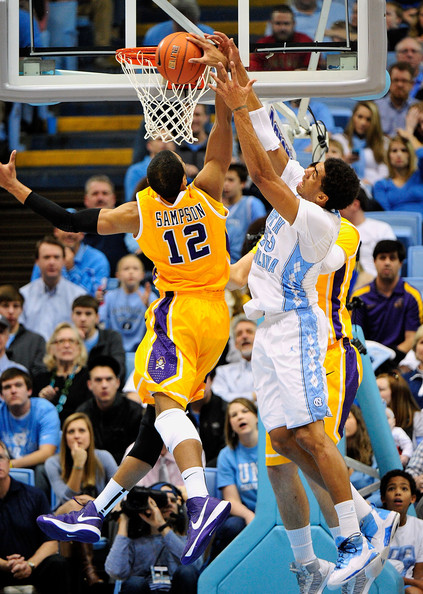
Georgia Tech Yellow Jackets
2013-2014: 16-17, 6-12 in the ACC
Preseason Projection: 14th in the ACC; postseason coaching change
Final Standing: 12-19, 3-15 in the ACC (14th in the ACC)
Departures: Trae Golden (13.3 ppg.), Daniel Miller (10.9 ppg., 7.8 rpg., 2.4 bpg.), and Kammeon Holsey (7.5 ppg., 5.0 rpg.) graduated; Robert Carter Jr. (11.4 ppg., 8.4 rpg.) transferred to Maryland.
Remember when all of the great point guards were coming out of Georgia Tech? What happened to that? This team hasn't had a good point guard since Javarris Crittenton in 2007. With Golden's graduation, this year's likely starter will be Travis Jorgensen, an unheralded recruit that was thoroughly unimpressive in four games before an ACL injury ended his freshman year. He will likely be joined by top 90 prospect Tadric Jackson, an explosive and aggressive slasher and defender that is not particularly skilled offensively. Jackson's cousin, junior Chris Bolden, will see playing time in the backcourt as well; he has provided little despite substantial minutes in his first two seasons. Junior small forward Marcus Georges-Hunt (11.7 ppg., 4.3 rpg.), the most talented returning player, could receive an infinite number of scoring opportunities considering the limitations of the players around him.
Miller's graduation and Carter's decision to transfer left giant holes in the frontcourt as well, but a surprisingly generous waiver allowing Maryland transfer Charles Mitchell to play immediately means the Yellow Jackets will remain competitive underneath. Mitchell (6.5 ppg., 6.3 rpg.) didn't progress much between his freshman and sophomore years at Maryland and is still foul prone, but he's a tough rebounder that won't be pushed around inside. He should start at center. Power forward should also be well taken care of by a transfer; senior East Carolina transfer Robert Sampson was a star of sorts at ECU, averaging 9.1 points, an impressive 9.2 rebounds, and 1.8 blocks per game. While at 6-8, 215 he is unlikely to put up those numbers in the ACC, he should serve as a strong compliment to the burly Mitchell. 6-8, 276 pound Ole Miss graduate transfer Demarco Cox, a former top 90 recruit, was always limited by his conditioning with the Rebels, but he did manage to average 16.4 minutes per game last season. He will provide imposing size off the bench. 6-8, 187 pound Quinton Stephens was highly recruited coming out of high school, but it may be difficult for him to add weight to his slender frame. He will see time at small forward and possibly as a remarkably undersized stretch 4.
The two transfers should allow Georgia Tech to remain competitive. Still, barring substantial improvement from returning players, which has never really occurred during Gregory's tenure, this could be a rough year for the Yellow Jackets, If so, a coaching change seems imminent.
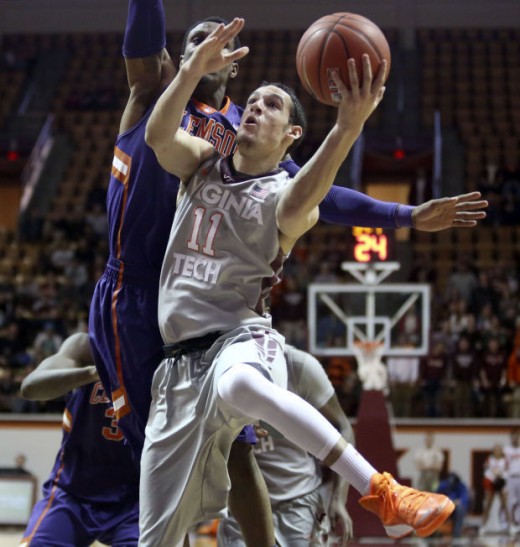
Virginia Tech Hokies
2013-2014: 9-22, 2-16 in the ACC
Preseason Projection: 11th in the ACC
Final Standing: 11-22, 2-16 in the ACC (15th)
Departures: Jarell Eddie (13.3 ppg., 5.4 rpg., 37.6% 3pt.) and Cadarian Raines graduated; extremely promising big man Trevor Thompson (5.0 ppg., 4.7 rpg.) transferred to Ohio St., Ben Emelogu is headed to SMU (10.5 ppg.) after a strong freshman season, Marshall Wood is transferring to Richmond, and C.J. Barksdale (8.1 ppg., 4.2 rpg.) is transferring as well.
The arrival of Buzz Williams has already had a major impact on the Hokies' roster. The perimeter has young talent, but a lack of big bodies will leave him with limited choices.
Despite the poor won loss record, the then freshman backcourt of Devin Wilson and Ben Emelogu was promising at times and made it seem that better days were ahead for the Hokies. Wilson (9.2 ppg., 4.8 apg.), an imposing point guard at 6-4, posted a nearly 2 to 1 assist to turnover ratio as a freshman despite a failing coaching staff, and, in a three game stretch in mid-January during which he averaged 20 points per game, showed potential as a scorer as well. Williams will likely love his size as a defender; he will attempt to firmly entrench himself at point guard before Seth Allen becomes eligible a season from now. Emelogu has since transferred in the wake of Williams' hiring, but has been replaced by two highly touted freshmen in Ahmed Hill, a top 60 recruit, and Justin Bibbs, a top 70 recruit; both are 6-5, physically strong, willing passers, and capable scorers. Hill followed Williams from Marquette, while Bibbs is also a perfect fit for what Williams likes to do. Junior Adam Smith, who was a member of the CAA all-freshman team before transferring to Virginia Tech, returns to back up Wilson. With the lack of bodies in the frontcourt, redshirt freshman Malik Mueller will likely see minutes as well.
Junior Joey Van Zegeren (6.4 ppg., 5.0 rpg., 1.7 bpg.) will be the only real size that Williams has available; he is a solid defensive presence that will likely see a substantial increase in playing time. The wildcard will be late junior college addition Shane Henry. Henry was rated ninth among JC recruits, and dominated at that level with rebounding and shot blocking in a way very similar to Jarvis Varnado at Mississippi State. Williams can only hope for that sort of production from Henry, who, like Varnado, enters Division I at 180 pounds. 6-10, 260 pound freshman Satchel Pierce, who followed Williams from Marquette, could see playing time out of necessity when the team needs size. Christian Beyor is also still around, and he may get his chances under Williams as well. He has always been a great rebounder despite only weighing 200 pounds.
Someone at Virginia Tech had a get rich quick scheme, but the roster changes will likely force fans to remain patient for at least one season. After two seasons of horrible execution under James Johnson, the Hokies are being taken over by a noted teacher and motivator that already has a history of success at a major college program similar to Virginia Tech, including two Sweet Sixteens and one Elite 8 between 2011 and 2013. This is a team that finished 284th in the country in assist to turnover ratio a season ago; however, offensive efficiency is a hallmark of Buzz Williams teams and, with a maturing point guard, that problem should be dealt with quickly. Post defense and post scoring, along with inexperience, will likely be the limiting factors for this team. While four players that would have definitely helped decided Williams wouldn't be the right fit for them, recruiting has already improved as Williams is a coach many players want to play for. While the team will likely struggle to compete in the paint in Williams' first year, the Hokies will likely still be more competitive than a season ago.

